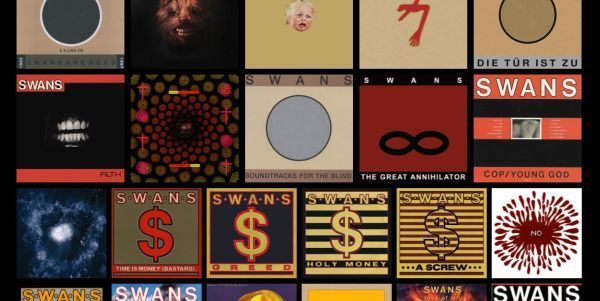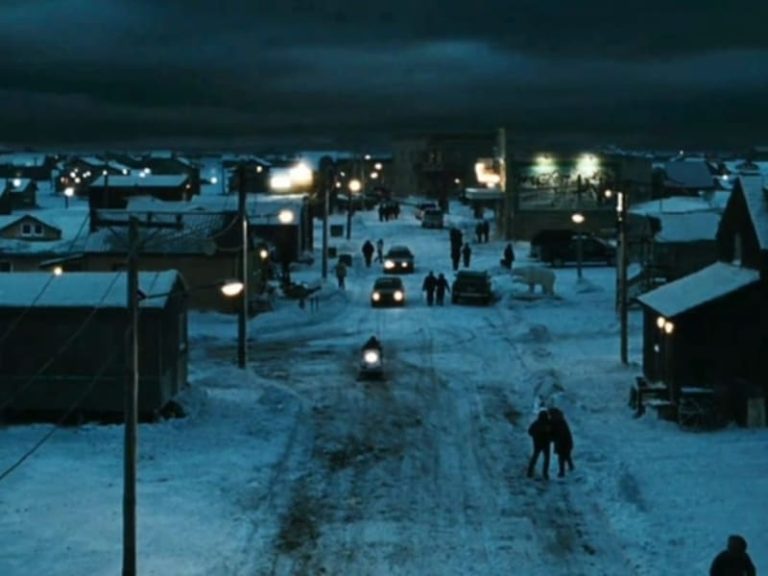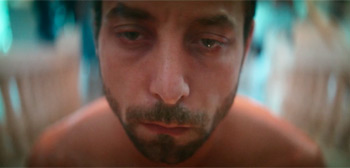SWANS – WHERE DOES A BODY END?: Swans and the Glowing Man
Fans of the group Swans will know exactly what I’m driving at because if you ask someone, “do you like Swans?” and the reply is never the simple reaction you get when you talk about other bands. A Swans fan will never say, “well, the early stuff is cool..” or ” yeah they had some cool singles, I like that one song….” The response you’ll likely get will usually include words like “transcendental” “shamanistic” “absorbing” as if there’s something more to the fandom than the music. With all this swirling around the cult following of Swans, and regardless of whether you’re a fan or not, it’s fairly bold to ask the daunting question, “what is Swans?” Luckily, director Marco Porsia, and producer Rodney Ascher decided to ask that question, and in making the film Swans – Where Does a Body End, they were able to get close to an answer. Well, the closest we’ll ever get to an answer anyway.
Early Days – Portrait of the Artist As An Angry Young Man
There’s a sense of admiration for the group from director Porsia, yet the film maintains a sense of objectivity in realizing this epic journey. Where Does A Body End kicks off with a linear structure, there’s great care in excavating the formative period of Michael Gira in the post-punk/no-wave days with his first group Circus Mort. And we’re introduced to none other than Thurston Moore, (the first in a long line of luminaries who appear in the film) whose long-standing relationship with the Michael Gira and Swans paints a compelling parallel as the two would experience different modes of success and renown from a public that was both hesitant and eager to embrace these self-styled musical artists. In the early days of their touring, Moore admits that they never played after Swans, since their sets were so immense, marauding, and loud.
Swans – Ent. Jarboe – A Legacy of Albums
This first portion very much paints Michael Gira budding music as the portrait of an artist-as-an-angry-young-man. For a good reason, the lumbering roar emitting from songs like “Stay Here” from their album Filth accompany the grimy recollections of pre-Guiliani New York; Gira casually recounts getting mugged at knifepoint. As the seed of the band is germinating, one of the key players in the story of Swans enter the picture with the inclusion of Jarboe; a key player as well as Gira‘s chief partner and collaborator for years that would become some of Swans most celebrated period.

The film is just as interested in Michael Gira as it is about Swans. After all, he’s the group’s driving force, but Marco Porsia is decidedly invested in exploring Swans as a band too. In an inspired decision, Where Does a Body End takes us on what seems like a diversionary path but works as a tonal calibrator. Porsia unveils the group’s early days, we’re treated to the story of its lead, Michael Gira. Shirking the formal “rock doc” format of humble beginnings and so forth, Gira‘s life is presented with a rugged sincerity and Gira presents himself as a self-made American artist teeming with a profound sense of worldly wisdom. The darker shades that constitute his upbringing also rolls into a more enlightening portrait of artistic renewal that also brought him into the world of music.
Music and the Making
There’s a pronounced examination of the group’s renowned discography, following earlier albums, Filth, and Cop with Greed, Holy Money, Children of God, as well as revealing the ingrained detail of the album’s artwork, design, and liner notes. There’s some emphasis on the bands noted misfire: The Burning World, an album, while it has its merits, is often seen as the group courting mainstream sensibilities as the mainstream washed over it with critical derision. Porsia however relates that something like The Burning World has a restorative element that drives the band’s vision, chiding the notion of universal appeal in favor of their original and bold instincts, and the inversion of filmic conventions by Porsia parallels the subjects of his film. Not to mention subsequent albums White Light from the Mouth of Infinity, Love of Life, The Great Annihilator, and their final (at the time) Soundtracks for the Blind.

In this illuminating section, there’s an explosion of archival footage, concerts, interviews from both past and present as various musical selections play throughout. Most importantly, there’s input from fellow band members (Clinton Steele, Bob Rieflin, Larry Mullins, Dana Schecter) other musicians, producers, engineers, Blixa Bargeld (of Einsturzenede Neubauten fame) Devendra Banhart, Amanda Palmer, Daniel Miller, Steve Von Till (Neuroses) Lee Ranaldo, Karen O, John Doran, Jim Sclavanous, Jehnny Beth, Kid Congo Powers, and Ben Frost to name a few. But Adele Fadelle’s comment stood out with decided aplomb, saying, “Swans just went beyond music..”
As a fan, Marco Porsia is interacting with the material in a thoughtful and meaningful way, but what’s just as important is that as a director, he’s not lost in a sea of self-interest but cultivates a thorough and engaging feature that explores, investigates and discovers.
But there’s a wellspring roiling underneath this look into the past that gives the film its timely relevance and current potency. The timeline follows Michael Gira‘s post Swans music, establishing his label, Young God Records, that would catapult the career of the likes of Devendra Banhart, but Gira‘s journey with Swans is far from over.
The Seer – Swans Return and Depart
Reactivating the band in 2010-11, Where Does a Body End immerses us in the touring and albums from the post-reformation era with some truly candid onstage and in-studio moments. And in this period, there’s this resurgence of power and energy emitting from Michael Gira, and how his intuitive minutia connects with a new generation is nothing short of moving. The live-shows look marvelous. The crowd performs just as hard as the band, and director Porsia knows when to let a scene run and when to cut away. While the temptation to let one of their towering performances play on must have been hard to fight, the film doesn’t falter into a promotional reel for the band’s renaissance but maintains its tonal structure and feel.

There’s also time for Michael Gira to really bare himself and his candor is both invigorating, intelligent, and inspirational. And the participation from Jarboe relates a sharp perspective that is often missing from the relative boys club culture of hard rock/punk music, so getting the story from a women’s point of view is another area of contrast that elevates the film.
There’s an intelligent passion and expression stitched into the fabric of Where Does a Body End, as it’s objectively in love with the group and its members, and yet there’s a cohesive vision that puts it leaps and bounds ahead of your average “rock-doc.” It’s enveloping, just as the music of Swans, the film swallows you up in a wind of footage that is intriguing for diehard fans and is capable of luring casual newcomers alike.
Release Information – Blu-Ray
The runtime of 161 might seem daunting, but would anyone actually “trust” a Swans documentary to clock in at your average runtime of 90 to 100 minutes? While the film’s informal thesis could be “What is Swans?” and the best answer to that question is to realize that there is no answer, but that question can take you to some amazing places which exactly where Marco Porsia, Rodney Ascher, Jarboe, and Michael Gira take you. That’s not to discount the films many collaborators and the denizen of talent and contributors who appear throughout, without them the movie wouldn’t be what it is.
The DVD/Blu-Ray is available in standard and deluxe formats, the bonus content featured in the deluxe edition is almost its own feature (clocking in nearly three -hours) with some equally revelatory footage and interviews. Some standouts include the band’s earlier years, anecdotes about other artists of the time (Lydia Lunch, The Germs, Glen Branca, Madonna, Einstürzende Neubauten, Nick Cave, and The Bad Seeds, Black Flag, X, Suicide), original artwork, and concert footage. The film will be streaming on Amazon Prime, this a movie that should be played as loud as possible.
Have you seen Where Does A Body End? What did you think? Let us know in the comments below!
Swans – Where Does A Body End is currently available VOD on Amazon Prime!
Watch Where Does A Body End?
Does content like this matter to you?
Become a Member and support film journalism. Unlock access to all of Film Inquiry`s great articles. Join a community of like-minded readers who are passionate about cinema – get access to our private members Network, give back to independent filmmakers, and more.
Join now!





